
Robert Dennis Crumb is an American cartoonist who often signs his work R. Crumb. His work displays a nostalgia for American folk culture of the late 19th and early 20th centuries, and satire of contemporary American culture.
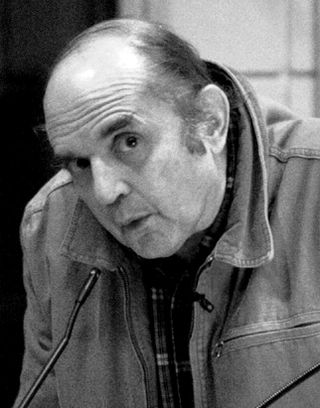
Harvey Lawrence Pekar was an American underground comic book writer, music critic, and media personality, best known for his autobiographical American Splendor comic series. In 2003, the series inspired a well-received film adaptation of the same name.
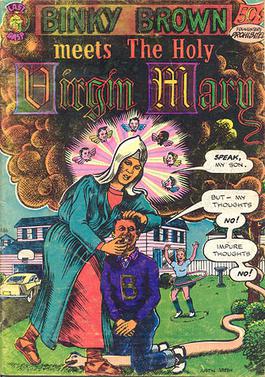
Binky Brown Meets the Holy Virgin Mary is an autobiographical comic by American cartoonist Justin Green, published in 1972. Green takes the persona of Binky Brown to tell of the "compulsive neurosis" with which he struggled in his youth and which he blamed on his strict Roman Catholic upbringing. Green was later diagnosed with obsessive–compulsive disorder (OCD) and came to see his problems in that light.
An autobiographical comic is an autobiography in the form of comic books or comic strips. The form first became popular in the underground comix movement and has since become more widespread. It is currently most popular in Canadian, American and French comics; all artists listed below are from the U.S. unless otherwise specified.

Howard Cruse was an American alternative cartoonist known for the exploration of gay themes in his comics. First coming to attention in the 1970s, during the underground comix movement with Barefootz, he was the founding editor of Gay Comix in 1980, created the gay-themed strip Wendel during the 1980s, and reached a more mainstream audience in 1995 when an imprint of DC Comics published his graphic novel Stuck Rubber Baby.

Piranha Press, an imprint of DC Comics from 1989 to 1994, was a response by DC to the growing interest in alternative comics. The imprint was edited by Mark Nevelow, who instead of developing comics with the established names in the alternative comics field, chose to introduce several unknown illustrators with an eclectic and diverse line of experimental graphic novels and stories. Unusual for the time, Nevelow succeeded in getting DC to agree to contracts giving creator ownership to writers and artists.
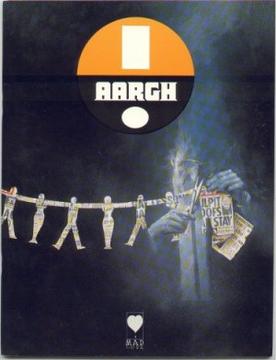
AARGH (Artists Against Rampant Government Homophobia) was a 76-page one-off comics anthology published by Mad Love in 1988.

Denis Kitchen is an American underground cartoonist, publisher, author, agent, and the founder of the Comic Book Legal Defense Fund.

I Never Liked You is a graphic novel by Canadian cartoonist Chester Brown. The story first ran between 1991 and 1993 under the title Fuck, in issues #26–30 of Brown's comic book Yummy Fur; published in book form by Drawn & Quarterly in 1994. It deals with the teenage Brown's introversion and difficulty talking to others, especially members of the opposite sex—including his mother. The story has minimal dialogue and is sparsely narrated. The artwork is amongst the simplest in Brown's body of work—some pages consist only of a single small panel.

Dean Edmund Haspiel is an American comic book artist, writer, and playwright. He is known for creating Billy Dogma, The Red Hook, and for his collaborations with writer Harvey Pekar on his American Splendor series as well as the graphic novel The Quitter, and for his collaborations with Jonathan Ames on The Alcoholic and HBO's Bored to Death. He has been nominated for numerous Eisner Awards, and won a 2010 Emmy Award for TV design work.
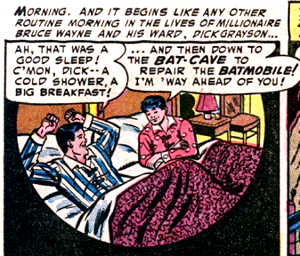
In comics, LGBT themes are a relatively new concept, as lesbian, gay, bisexual, and transgender (LGBT) themes and characters were historically omitted from the content of comic books and their comic strip predecessors due to anti-gay censorship. LGBT existence was included only via innuendo, subtext and inference. However the practice of hiding LGBT characters in the early part of the twentieth century evolved into open inclusion in the late twentieth and early twenty-first centuries, and comics explored the challenges of coming-out, societal discrimination, and personal and romantic relationships between gay characters.
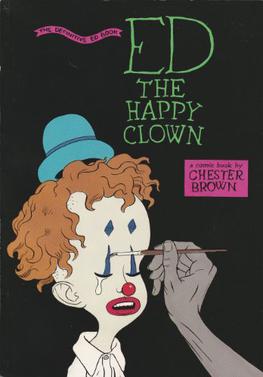
Ed the Happy Clown is a graphic novel by Canadian cartoonist Chester Brown. Its title character is a large-headed, childlike children's clown who undergoes one horrifying affliction after another. The story is a dark, humorous mix of genres and features scatological humour, sex, body horror, extreme graphic violence, and blasphemous religious imagery. Central to the plot are a man who cannot stop defecating; the head of a miniature, other-dimensional Ronald Reagan attached to the head of Ed's penis; and a female vampire who seeks revenge on her adulterous lover who had murdered her to escape his sins.
Linda Medley is an American comic book author and illustrator, known for her Castle Waiting series of comic books and graphic novels.
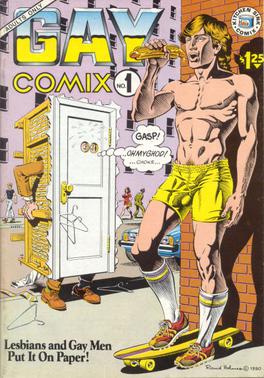
Gay Comix is an underground comics series published from 1980–1998 featuring cartoons by and for gay men and lesbians. The comic books had the tagline “Lesbians and Gay Men Put It On Paper!”
Robert Triptow is an American writer and artist. He is known primarily for creating gay- and bisexual-themed comics and for editing Gay Comix in the 1980s, and he was identified by underground comix pioneer Lee Marrs as "the last of the underground cartoonists."
Nib-Lit is a weekly comics journal edited by Mykl Sivak and published both independently in an electronic format as well as running as a two-page section in Southern News, the student newspaper of Southern Connecticut State University. The journal features original and syndicated strips by a wide range of international cartoonists, both established and up-and-coming. It features a number of comics formats from single panel comic strips, to multi-page graphic short stories, to serialized graphic novels. The journal also prints comics related columns and criticism by writers from within and outside of the comics world. Nib-Lit also regularly releases a podcast featuring interviews with creators from across the comics world.
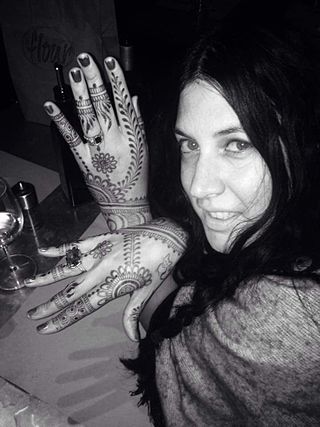
Tara Seibel is an American cartoonist, graphic designer and illustrator from Cleveland. Her work has been published in Chicago Newcity, Funny Times, The Austin Chronicle, Cleveland Scene, Heeb Magazine, SMITH Magazine, Mineshaft Magazine, Juxtapoz, Jewish Review of Books, Cleveland Free Times, USA Today, US Catholic, The New York Times, Los Angeles Times and The Paris Review.
Canadian cartoonist Chester Brown attracted the attention of critics and peers in the early 1990s alternative comics world when he began publishing autobiographical comics in his comic book Yummy Fur. During this period Brown produced a number of short strips and two graphic novels: The Playboy (1992) and I Never Liked You (1994). The personal and revealing deal with Brown's social awkwardness and introversion, and the artwork and page layouts are minimal and organic. In 2011 Brown returned to autobiography with Paying for It, an account of his experience with prostitutes.

Edward R. Piskor Jr. was an American alternative comics cartoonist. Piskor was known primarily for his work on Hip Hop Family Tree, X-Men: Grand Design, and the Red Room trilogy. Piskor also co-hosted the YouTube channel Cartoonist Kayfabe with fellow Pittsburgh native cartoonist Jim Rugg. In March 2024, Piskor was accused via social media of sexual misconduct. Piskor died on April 1, 2024, at the age of 41, hours after posting a suicide note via social media, defending himself against the allegations leveled against him.
Strip AIDS and Strip AIDS U.S.A. are comics anthology volumes published in 1987 in the UK, and 1988 in the US (respectively). They combined short comics with educational and sometimes comedic themes, to educate readers about HIV disease and safer sex, and to raise funds for the care of people with AIDS.














